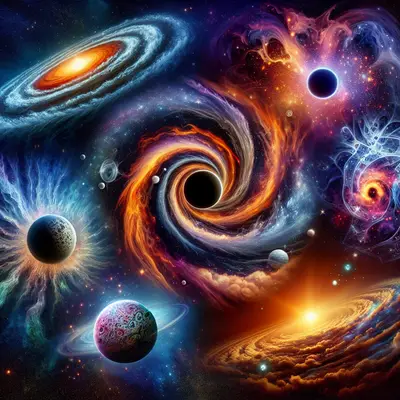The Planetary Dance
The planet Venus, often mistaken for a star in our night sky due to its intense shine, has a unique dance of its own. Unlike other planets in our solar system, Venus spins in the opposite direction of its orbit around the Sun. This peculiar motion, known as retrograde rotation, results in longer days than years on Venus. Imagine having a day that lasts longer than a year!
The Silent Symphony
Space may be the final frontier, but it's a silent one. Sound waves require a medium to travel through, like air or water, and space is a vacuum devoid of these mediums. So, if you were expecting to hear the magnificent explosions of supernovae or the eerie hums of distant galaxies, you'd be met with an eternal silence. The cosmos is indeed a silent symphony.
The Cosmic Speed Limit
Nothing in the universe can exceed the speed of light, approximately 300,000 kilometers per second. This cosmic speed limit, established by Einstein's theory of relativity, means that light from stars billions of light years away is just reaching us now. When we gaze into the night sky, we're actually looking back in time.
The Diamond Rain
On Saturn and Jupiter, it literally rains diamonds. Scientists speculate that intense pressure and temperature conditions in these gas giants' atmospheres can turn carbon into diamonds. As these precious stones descend, they melt into a liquid sea in the planet's hot core. A downpour of diamonds – now, that's a weather forecast we can get behind!
The Colossal Void
Our universe is awash with galaxies, but there's an area that's eerily void of them – the Bootes void. This spherical region, measuring about 330 million light-years in diameter, is the largest void known in the universe. With only about 60 galaxies discovered in this region, the Bootes void is like a vast cosmic desert.
Conclusion
Space, the final frontier, remains a realm of endless fascination and mystery. From Venus's peculiar rotation to diamond rains on Saturn and Jupiter, the universe never fails to astound us with its unearthly wonders. As we continue our cosmic journey, who knows what other spectacular secrets the universe holds for us? Each new discovery reminds us just how much there is still to explore.



